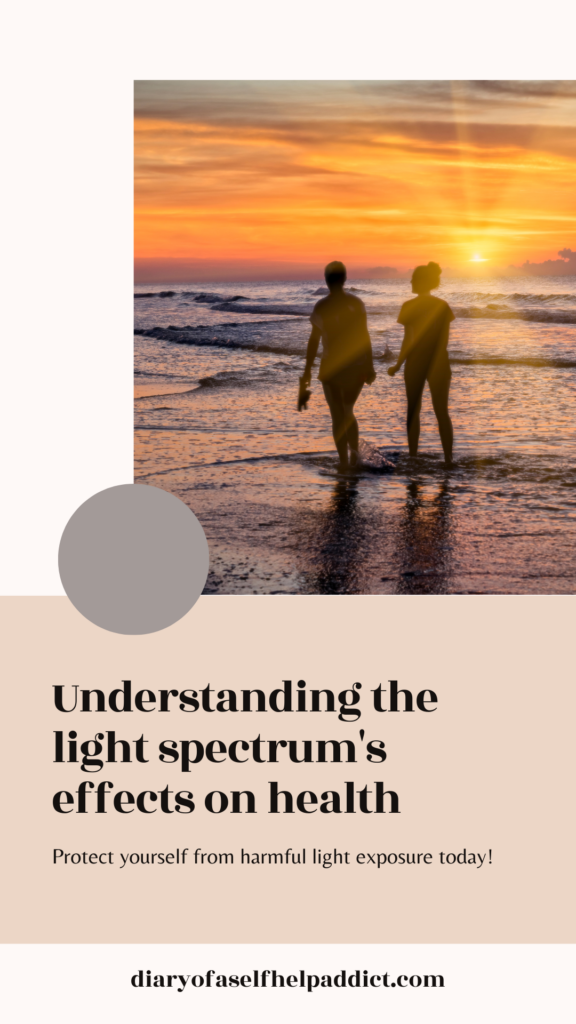
In this post, we’ll explore the importance of natural light exposure, the pitfalls of artificial blue light, and actionable steps to harness light’s power for optimal health. Light is more than just a way to see; it’s a critical regulator of our body’s internal clock, mood, metabolism, and overall health. Yet, in our modern, screen-dominated world, many of us are out of sync with nature’s light cycles.
This post has affiliate links; when you purchase from my links, I may earn a small commission. You may read my privacy and disclosure policy here. Thank you for supporting my small business.
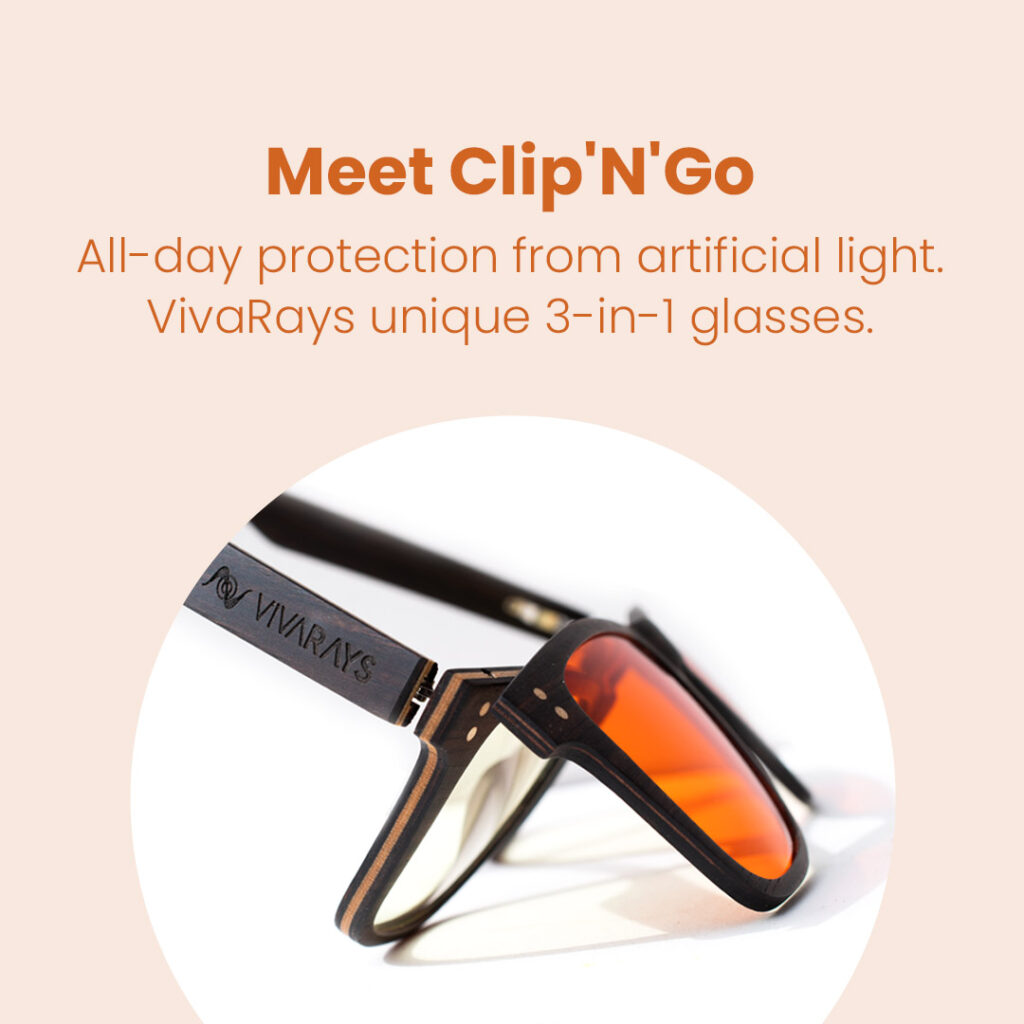
My Journey with Light and VivaRays
Since starting my blog, “Diary of a Self-Help Addict,” I’ve spent more time than ever working on my computer. While I loved the creative process, I quickly noticed my sleep was suffering. I often felt restless at night and struggled to wake up refreshed. That’s when I began researching the effects of artificial blue light, hoping to find a solution.
This journey led me to discover VivaRays—and it was a game-changer. Not only did their circadian light therapy glasses improve my sleep, but they also sparked a fascination with the science of light. I fell down a rabbit hole of information, learning about the profound effects of light exposure on our bodies. For instance, I discovered the importance of morning infrared and UV-A light before UV-B exposure to prevent sunburn, enhance vitamin D synthesis, and unlock many other benefits.
I also learned why most generic blue light-blocking glasses weren’t cutting it. These glasses often block light arbitrarily, failing to account for the science of how light affects our circadian rhythm throughout the day. Many are mass-produced without the precision to protect our eyes and align our body’s natural cycles. That’s where VivaRays stood out with their advanced, science-backed lens technology.
This newfound knowledge inspired me to align my daily habits with nature’s light cycles. I’m excited to share what I’ve learned and help others experience these transformative benefits.
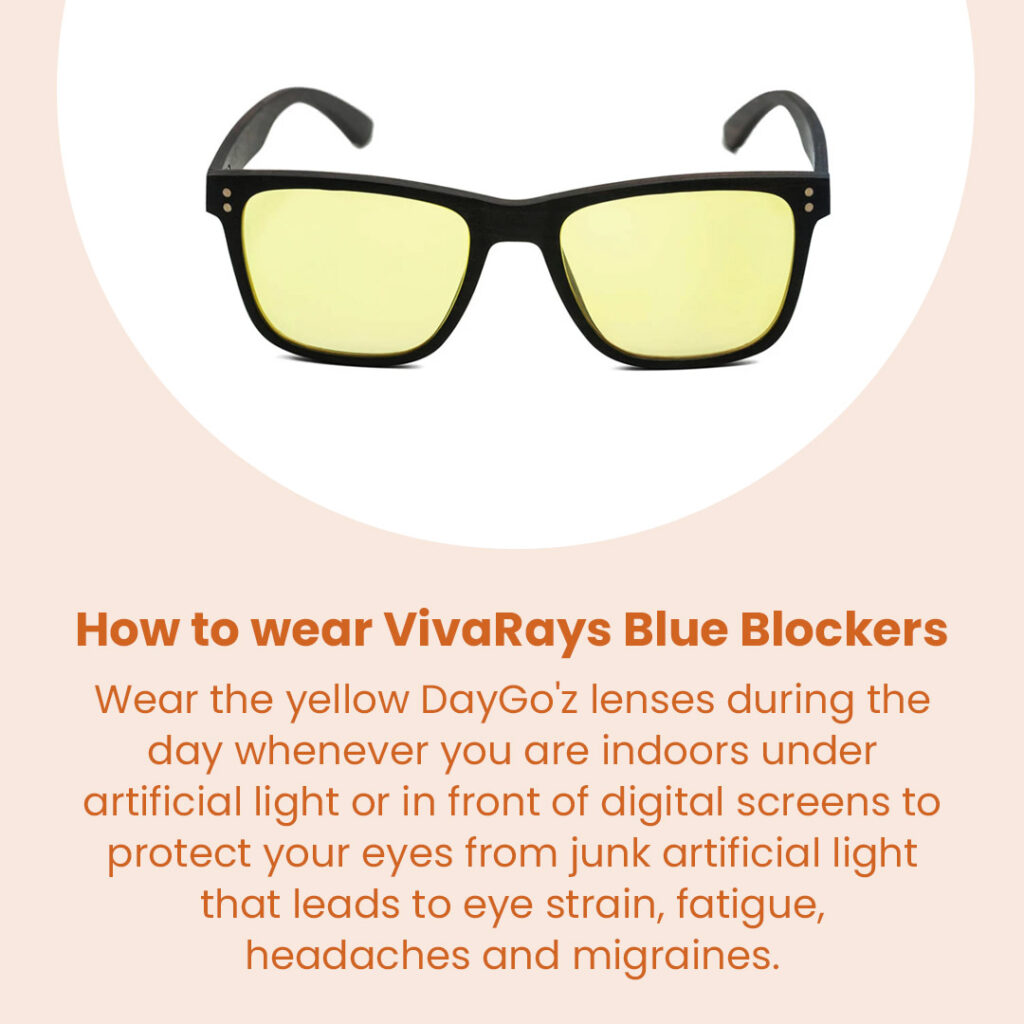
The Magic of Morning Light
Natural sunlight is a full-spectrum light source that changes throughout the day. In the morning at sunrise, infrared (IR) light dominates the spectrum, followed by UV-A and UV-B light as the day progresses. Exposing your body to these wavelengths in the correct order has profound benefits:
- Infrared Light: Early morning light is rich in infrared wavelengths, which penetrate deep into the skin and stimulate mitochondrial function, the powerhouses of our cells. This light supports cellular repair, improves circulation, and primes the body for energy production and exposure to ultraviolet light.
- UV-A Light: Shortly after sunrise, UV-A light stimulates the release of nitric oxide, which enhances blood flow and aids in cardiovascular health. It also sets the stage for hormone regulation, including serotonin production.
- UV-B Light: Later in the morning and mid-day, UV-B light triggers the production of vitamin D, a crucial hormone-like compound that supports bone health, immune function, and mood regulation.
How to Incorporate Sunrise Exposure:
- Spend at least 10–20 minutes outside in the early morning sunlight.
- Allow natural light to hit your eyes (without sunglasses) and allow your skin to absorb these benefits fully.
- Pair your morning light exposure with mindfulness or light movement, like a walk or gentle yoga. (or sip your morning coffee outside like I do.)
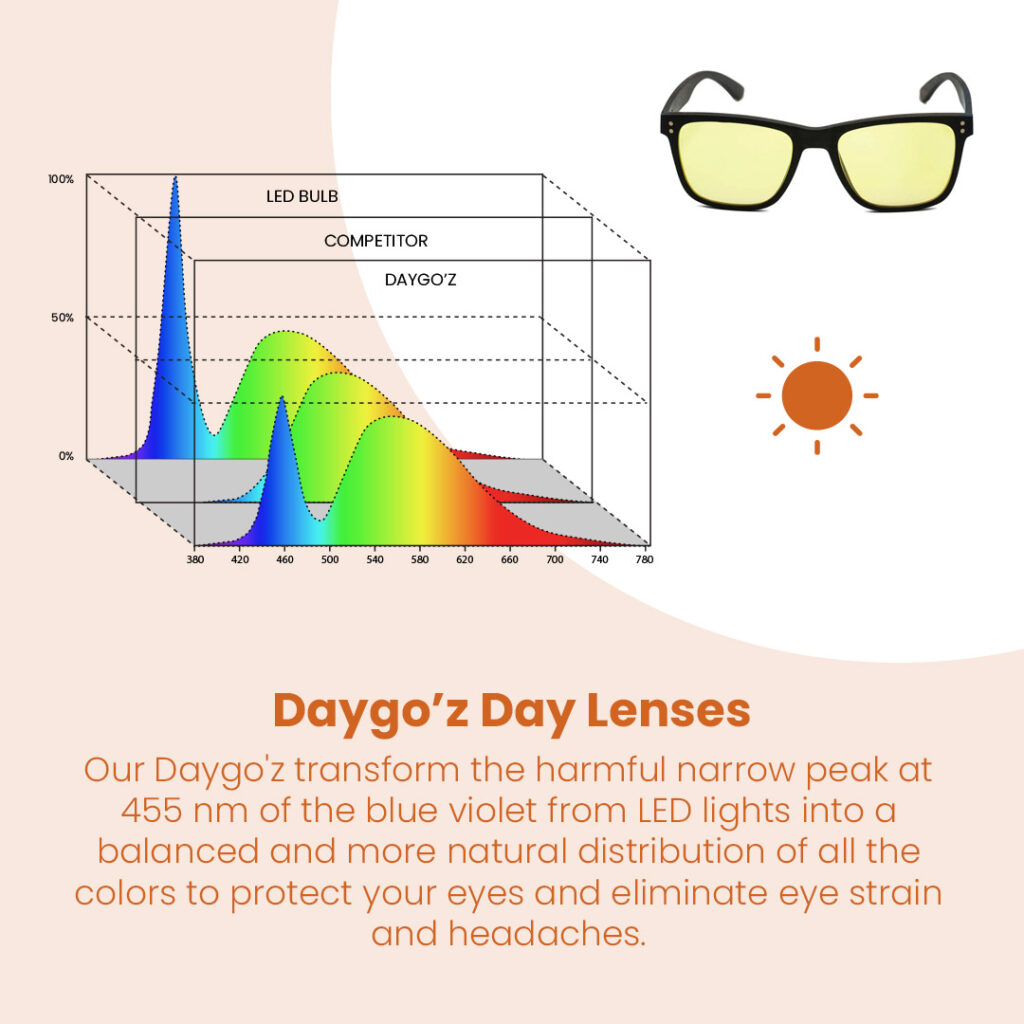
Why Blocking Artificial Blue Light is Essential
Artificial light—primarily blue light from LEDs and screens—significantly challenges our natural circadian rhythm. Blue light overstimulates the brain, especially when used at the wrong times, particularly in the early morning or evening. This misalignment can:
- Disrupt Melatonin Production: Blue light at night suppresses melatonin, the sleep hormone, making it harder to fall and stay asleep.
- Overstimulate Cortisol: Artificial light can keep cortisol levels elevated, leading to chronic stress, fatigue, and even weight gain.
- Affect Metabolism: Misaligned light exposure disrupts metabolic hormones, potentially contributing to blood sugar imbalances and weight issues.
Why Most Artificial Blue Light Blocking Glasses Fall Short:
Generic blue light-blocking glasses often fail because they block light randomly and non-scientifically. They don’t account for how light changes throughout the day or target the specific wavelengths responsible for disrupting circadian rhythms. Many are mass-produced without precision, leaving users unprotected against harmful blue light while blocking beneficial light frequencies. VivaRays circumvents these issues with scientifically designed lenses that adapt to the time of day, providing comprehensive protection and promoting better health outcomes.
When and How to Block Artificial Blue Light:
- Daytime: Use glasses like VivaRays DayGo’z lenses to transform harmful LED blue light into a balanced, natural spectrum that reduces eye strain and boosts productivity.
- Evening: After sunset, switch to VivaRays Eve’z lenses to block 100% of blue light and specific portions of green light, mimicking the warm glow of a bonfire.
- Nighttime: An hour or two before bed, wear VivaRays Sleeper’z lenses. These filter out all blue and green light, helping your brain naturally produce melatonin and preparing your body for deep sleep.
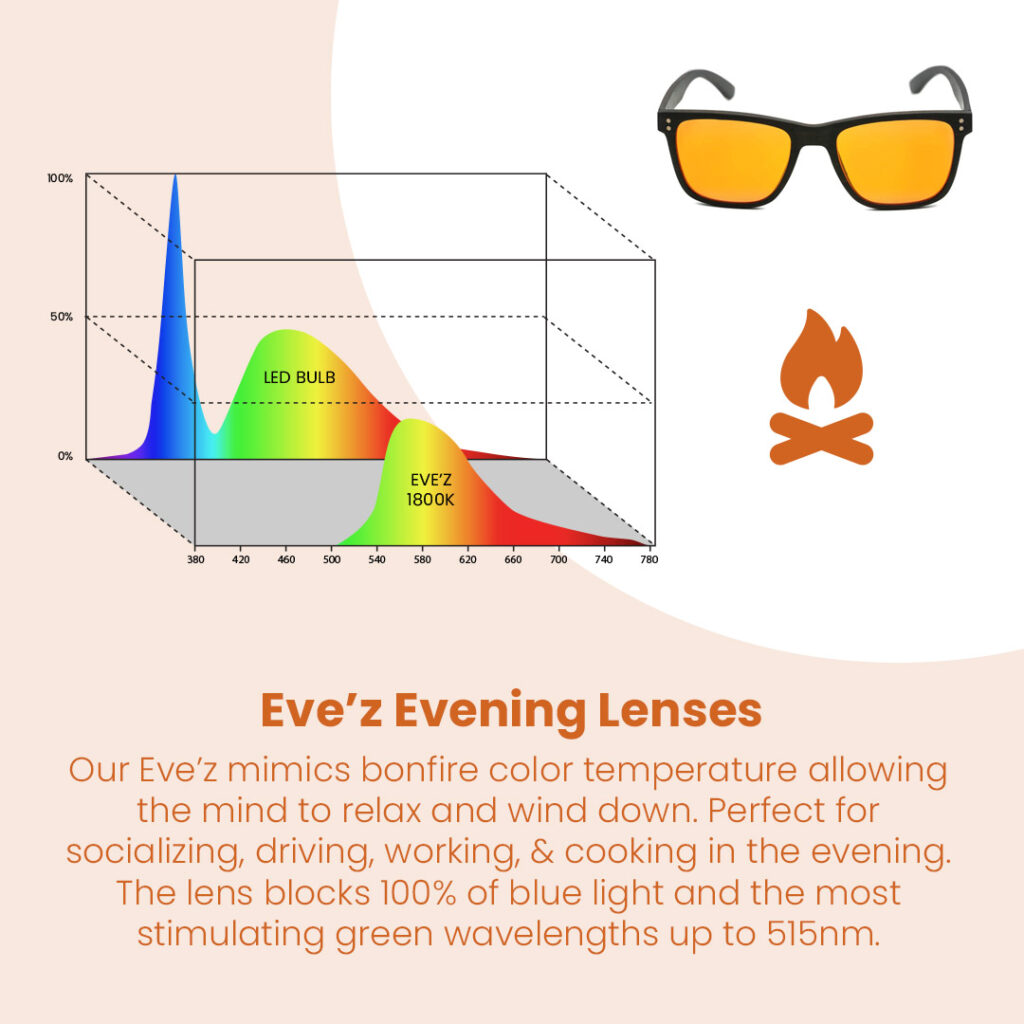
The Role of Circadian Rhythms in Health
Your body’s circadian rhythm is an internal clock that governs sleep, hormone release, and digestion processes. Light acts as the primary cue for this rhythm. By aligning your exposure to natural light cycles, you can:
- Improve Sleep Quality: Proper light exposure helps your body know when to wake up and wind down.
- Balance Hormones: Light cues regulate cortisol (wakefulness), melatonin (sleep), insulin, and leptin, which affect blood sugar and hunger.
- Boost Metabolism and Repair: Morning light exposure activates repair processes that optimize metabolic health and support recovery.
Key Tip: Limit artificial light exposure after sunset to maintain a natural circadian rhythm. Apps like myCircadian can help you track your light exposure and offer personalized suggestions.
VivaRays: The Ultimate Light Management Tool
One of my favorite tools for light management is VivaRays Circadian Light Therapy Glasses. They offer an innovative three-lens system designed to align with nature’s light cycles:
- DayGo’z (Daytime Lens):
- Protects against harmful blue light spikes from LEDs.
- Promotes productivity and reduces eye strain.
- Eve’z (Evening Lens):
- Blocks stimulating blue light post-sunset.
- Helps you unwind while staying social or working.
- Sleeper’z (Nighttime Lens):
- Eliminates all blue and green light to promote melatonin production.
- Supports deep, restorative sleep.
Their innovative Clip’N’Go design consolidates these lenses into one convenient system. At $297, this holistic solution offers unparalleled value compared to traditional blue-blocking glasses that often cost much more.
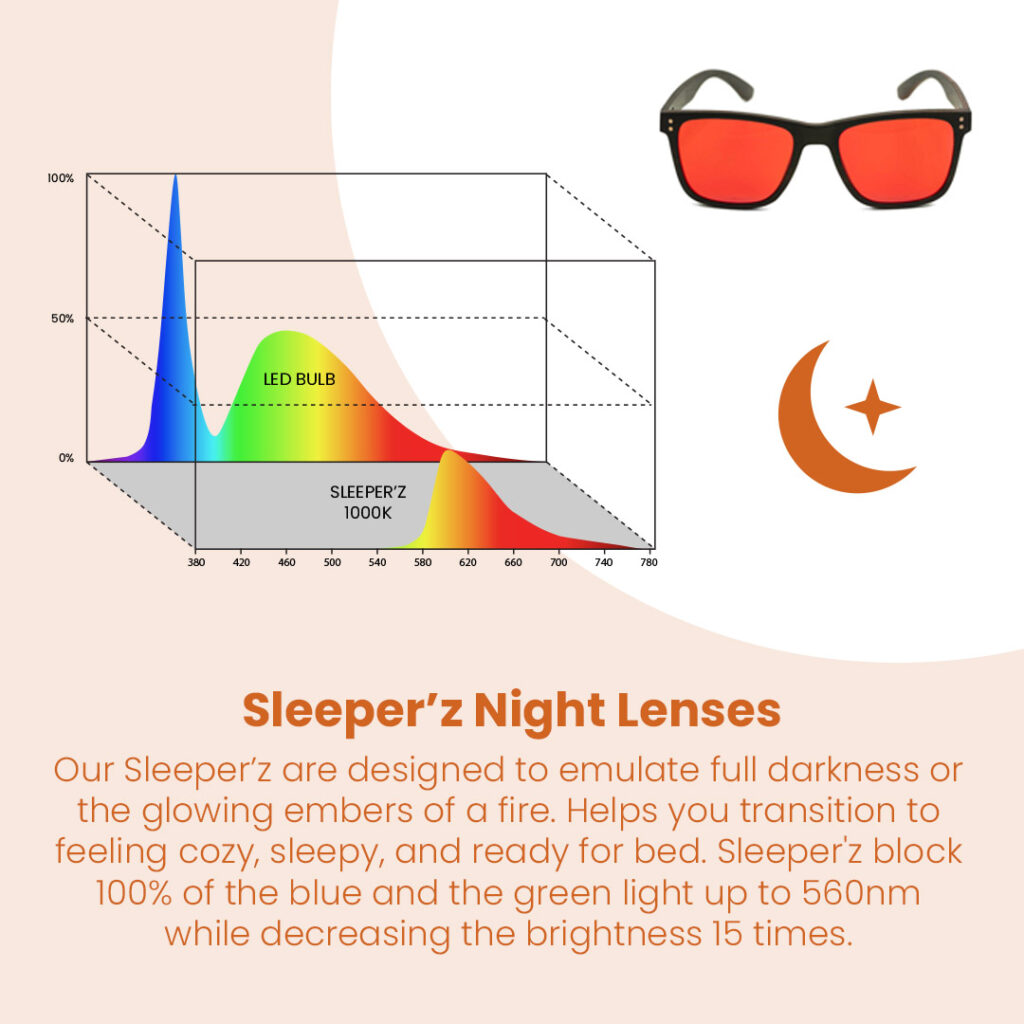
Practical Steps to Optimize Light Exposure
- Morning Routine:
- Get 10–20 minutes of infrared and UV-A light exposure by stepping outside within an hour of sunrise.
- Avoid sunglasses to allow natural light to hit your eyes.
- Keep your window open a crack while driving to work in the early morning to allow the sun’s rays in.
- If you need to look at your phone or computer before the sun rises, wear your VivaRays glasses so that the first light you’re exposed to is natural sunlight.
- Daytime Light:
- Use natural sunlight as your primary light source. Open blinds or work near windows.
- Wear VivaRays DayGo’z lenses if exposed to artificial light.
- Evening Routine:
- Dim lights or use warm, amber-colored bulbs after sunset.
- Do your work or socialize by fire or candlelight.
- Wear VivaRays Eve’z lenses to block disruptive blue light.
- Nighttime Wind-Down:
- Avoid screens and bright lights 1–2 hours before bed.
- Wear VivaRays Sleeper’z lenses to signal your brain that it’s time to rest.
Transform Your Health with Light
By aligning your light exposure with nature’s cycles, you can:
- Sleep better and wake up refreshed.
- Balance your metabolism and blood sugar levels.
- Enhance your mood and energy levels.
- Support long-term health and vitality.
Start your journey by downloading the MyCircadian App and exploring VivaRays’ range of innovative glasses. Your body will thank you!
If you’ve found these insights valuable, share this post with someone who could benefit from better light habits. Don’t forget to use my VivaRays affiliate link to get your hands on these revolutionary circadian light therapy glasses! Thank you for supporting my small business!
Pin it for later
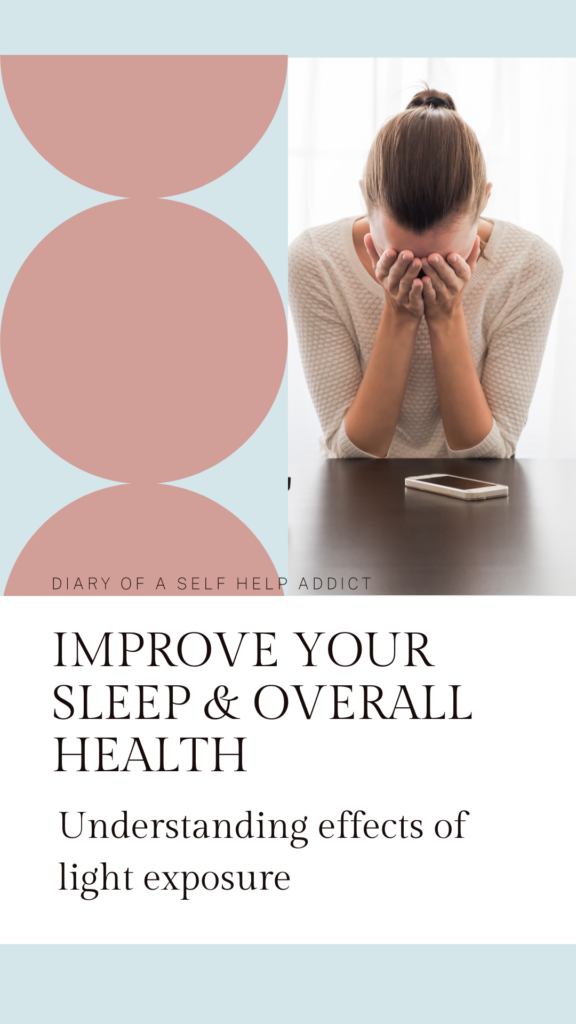

Leave a Reply